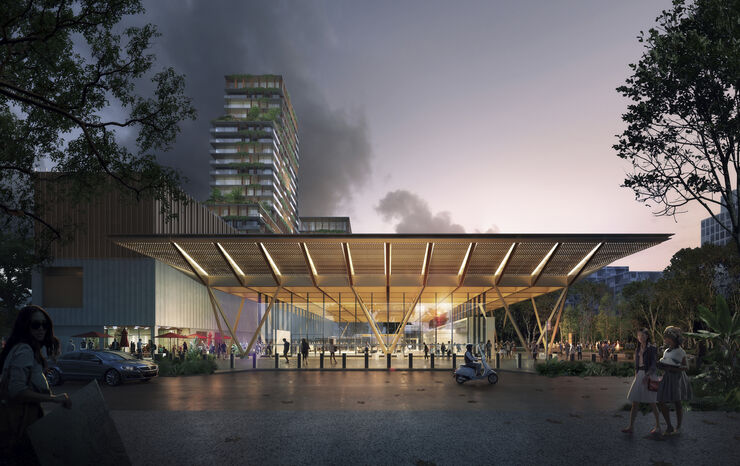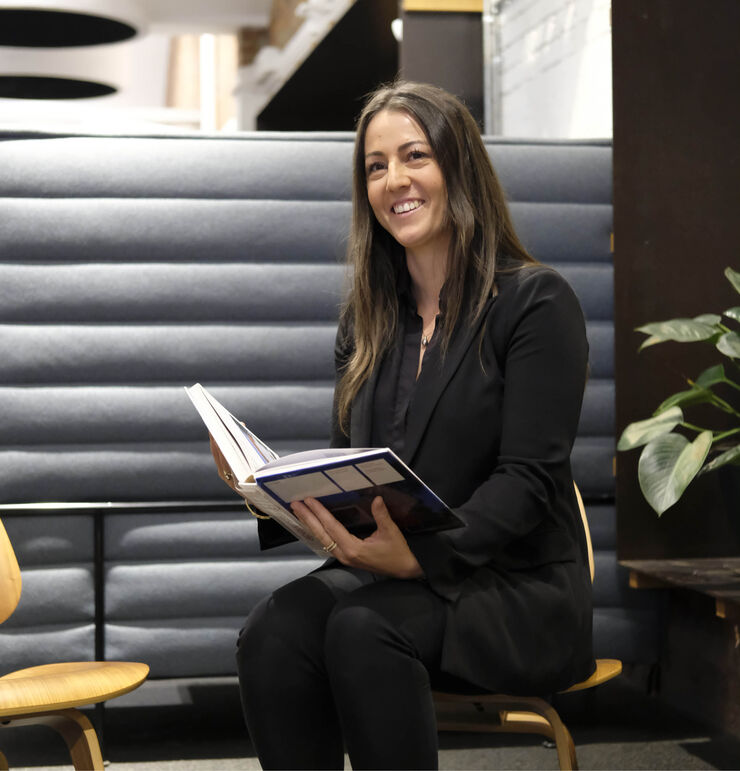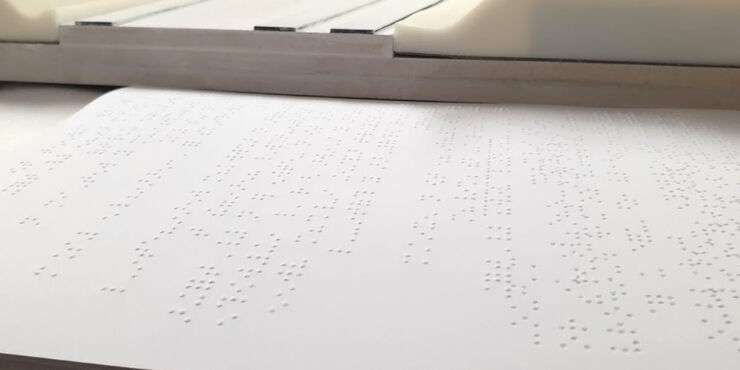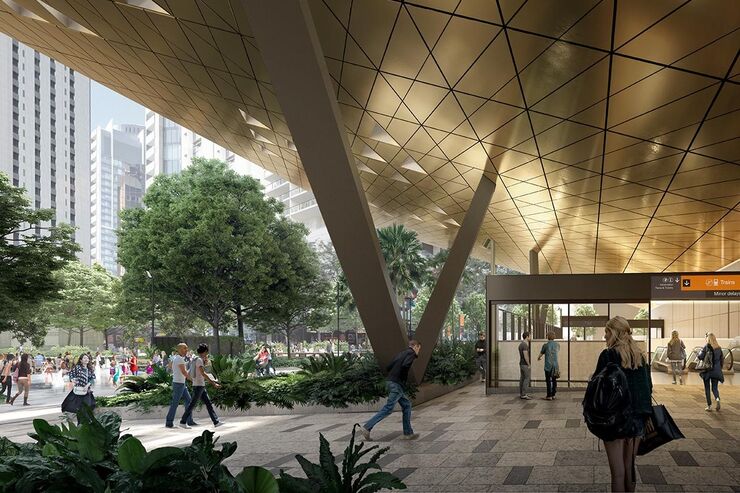A toolkit for inclusive transport: Exploring the three pillars of co-design
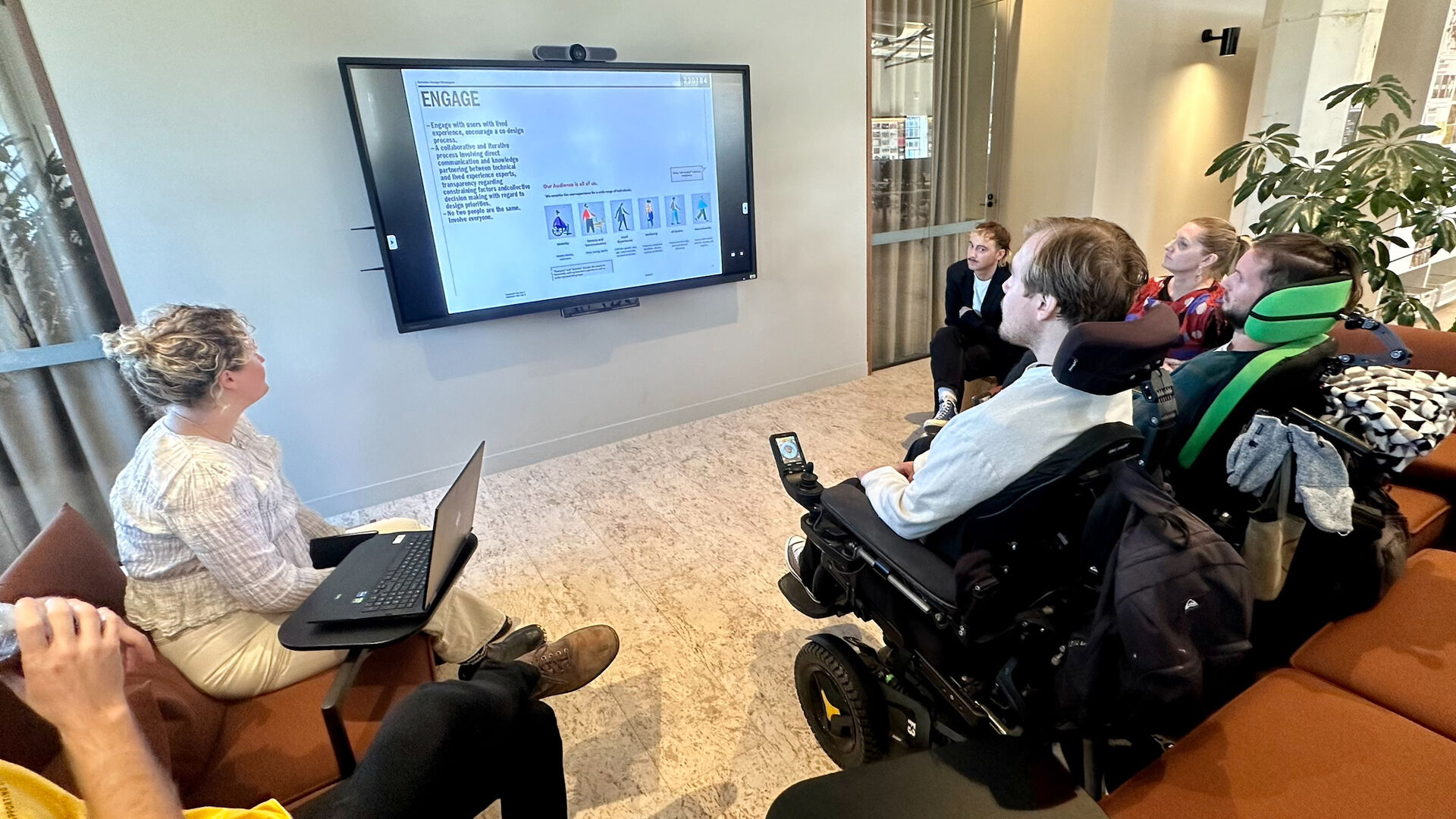
By Tanya Golitschenko
How do you create an equitable transport experience for commuters with complex needs? Take a look at how we embedded co-design in the Cross River Rail project on Yuggera and Turrbal Country in Brisbane, Australia.
Download the TOOLKIT: Embedding Accessibility Co-design into the Delivery of Public Transport Infrastructure.
Moving through a city can be daunting for some commuters, relying on lifts, tactile or auditory markers, braille maps, hearing loops or other mechanisms to ensure inclusive travel. Designing a journey to achieve equitable access takes commitment from many, which is what the team working to deliver Cross River Rail has achieved through implementing an extensive co-design process with diverse stakeholders.
According to John MacPherson, former Manager of the Accessible Transport Network, “Co-design is a pillar of universal design in that the needs of the users — in all their glorious diversity — are incorporated to the degree possible, allowing maximum benefit to the maximum number.”
“Co-design unites the designer’s skill with the user’s lived experience. They meet as peers in a forum where knowledge is exchanged, and problems are solved before the asset or service is realised or constructed.”
— John MacPherson, former Manager of the Accessible Transport Network, Queensland Department of Transport and Main Roads, an advocate for people with limited mobility and a manual wheelchair user
The Cross River Rail project team committed to a comprehensive co-design process. The outcomes of this process will ensure that diverse needs are met — from vision and hearing impairment to accessibility and mobility requirements — and that the journey from beyond the station to inside the carriage is seamless for everyone.
Through the co-design process, an accessibility toolkit was developed in a collaboration between the Cross River Rail Delivery Authority and The Hopkins Centre: Research for Rehabilitation and Resilience. The TOOLKIT: Embedding Accessibility Co-design into the Delivery of Public Transport Infrastructure centres on three key pillars of the co-design process — developing a thorough framework, a consistent process and measured outcomes.
Understanding these three pillars can guide any organisation or team looking to deliver an inclusive project or space through co-design.

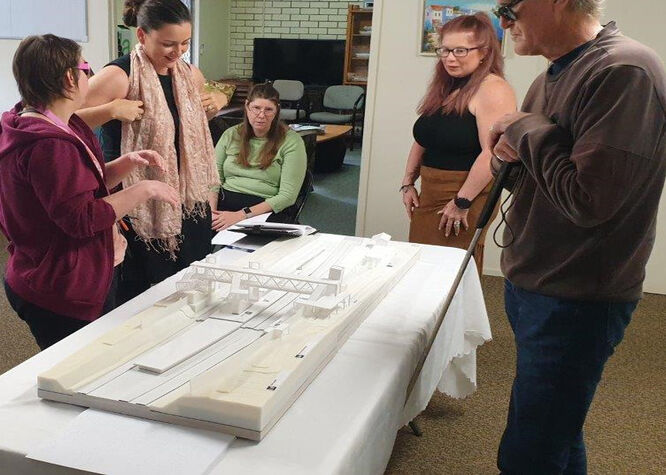
THE IMPORTANCE OF A THOROUGH FRAMEWORK
A planned and robust framework forms the bedrock of any successful co-design process, is a mechanism to explore best-practice solutions and allows everyone to have a voice. When those with diverse needs are invited to the table, deeper listening occurs, and more meaningful relationships develop and synergise to identify best practice outcomes and surpass baseline accessibility standards.
This approach has been instrumental in crafting genuinely inclusive designs responsive to all users’ needs. This approach was possible due to the Cross River Rail Delivery Authority’s commitment to establishing the Accessibility Reference Group.
“We wanted to ensure that engagement was genuine. The open conversations resulted in co-designed outcomes that supported those with diverse needs and provided benefits for all customers.”
— Cobi Murphy, Senior Customer and Network Change Manager, Cross River Rail Delivery Authority
Early engagement is paramount to the co-design process and ideally begins during the pre-project stage to avoid accessibility challenges and late-stage rework. Determining the engagement approach involves defining the type, scope and target participants; this can be supported by utilising the following tools as outlined in the toolkit:
- A decision-making flowchart to define the type of engagement, with who and how.
- A co-design timeline template that maps the engagement relative to the project design and delivery stages.
- A project context mapping tool to identify the potential co-designers.
- A governance structure to support leadership advocacy and a high-level mandate for co-design.
- Establish a body of knowledge and create a centralised repository of information.
- A co-design activity selection tool to help identify the type of participant contribution and assist with a remuneration strategy.
- A recruitment tool to understand everyone’s requirements so that content and provisions can be tailored to suit them.
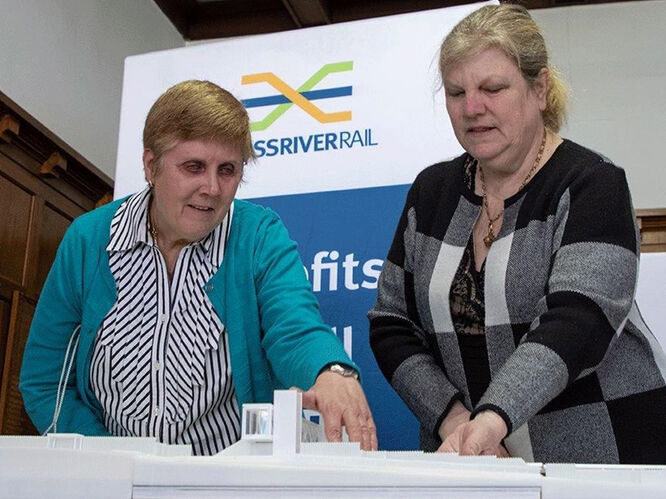

HAVING A CONSISTENT PROCESS
Consistency throughout the co-design process is essential for achieving inclusive outcomes. Our team reimagined our presentation formats describing designs in detail as if there were no visualisations to refer to. This strategy involved using larger fonts and contrasting colours to accommodate people with low vision or colour blindness. To make the designs most accessible to our blind and low-vision community members, we ventured into tactile communication.
We designed and printed 3D tactile models of our stations, which enabled people to provide valuable feedback by tracing the models with their fingers.
Using mock-ups and testing, we evaluated critical accessibility features, such as braille and tactile signage, rubber platform gap fillers and surface finishes for contrast and reflectivity. Collaborating with organisations like tactual literacy not-for-profit Braille House allowed us to incorporate braille language descriptions.
An authentic and robust co-design process can be supported by utilising the following tools as outlined in the toolkit:
- The agenda for the initial meeting ensures everyone is on the same page.
- Regular check-ins in the form of testimonials, project schedules, templates, etc.
- Ensure accessible and flexible methods of communication to enable all participants to provide input.
- Teams should consider a decision-making matrix or multifactor analysis framework to prioritise and balance project needs.
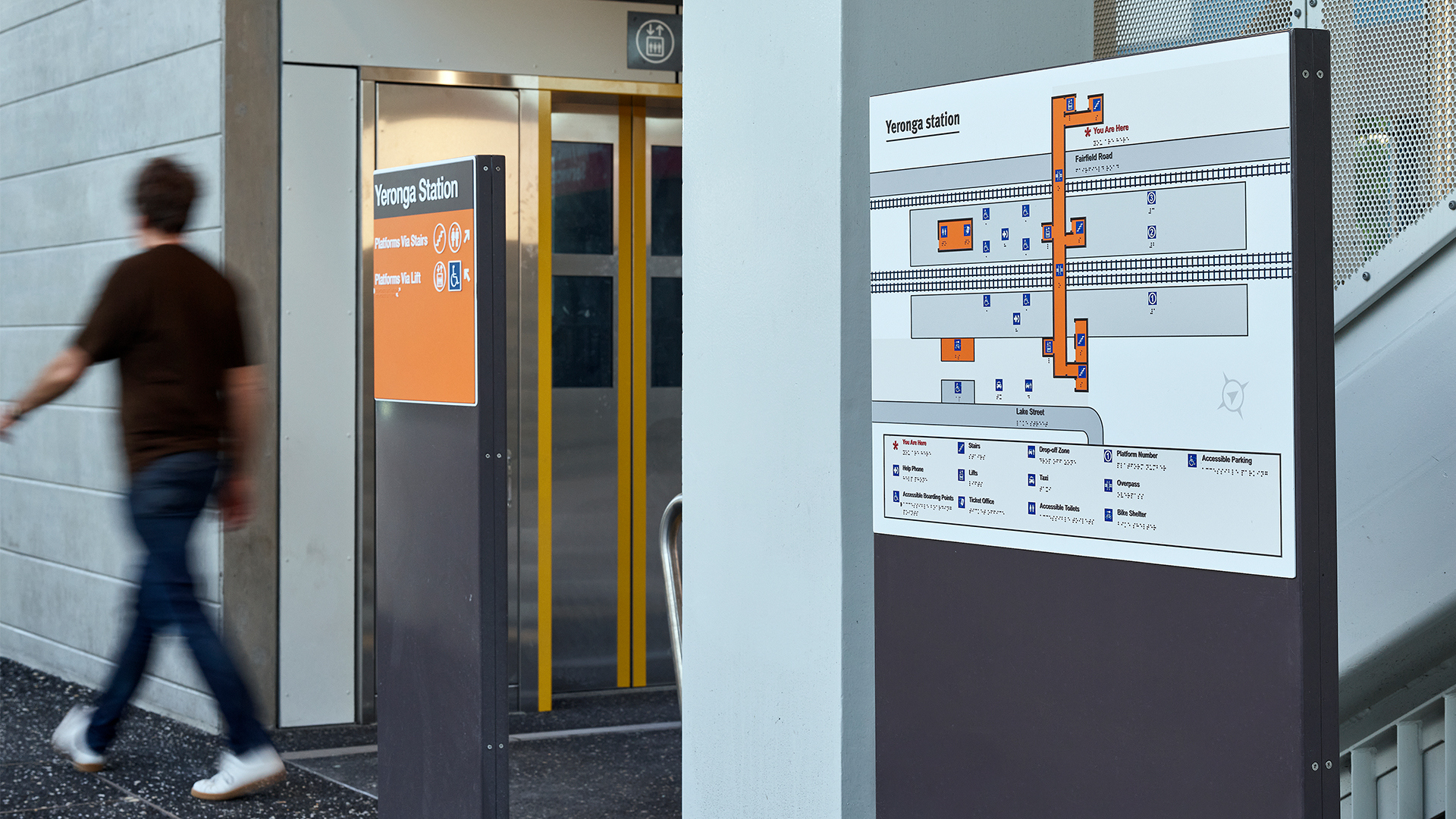
ACHIEVING MEASURED OUTCOMES
Measuring outcomes is the final pillar that completes the trifecta of successful co-design processes. Documentation and critical reflection are key, helping identify successful activities, evaluate engagement outcomes and summarise recommendations.
Through regular feedback and collaboration with the Accessibility Reference Group, Cross River Rail has set a new benchmark for accessibility in public transport infrastructure.
The involvement of the Accessibility Reference Group has resulted in significant wins, and the feedback from this group is very positive.
A measured process can support operators and clients, and ensure compliance with legislation. This can be supported by utilising the following tools as outlined in the toolkit:
- Co-design evaluation criteria can be used throughout the engagement process, informally and formally at the end of the process.
- A summary of key recommendations, including metrics of importance to track and measure, will help to understand what was achieved, what could not be implemented, why and what should be considered for future stages and projects. This summary is handy as the design moves into construction to ensure that recommendations are met.
The three pillars of co-design — a thorough framework, a consistent process, and measured outcomes — work together to ensure comprehensive, inclusive and impactful design outcomes meet diverse user needs effectively. Aside from delivering nationally significant equity outcomes, the Cross River Rail project offers a toolkit to support other teams in propelling new public spaces toward equity, accessibility and inclusivity for all.
Download the TOOLKIT: Embedding Accessibility Co-design into the Delivery of Public Transport Infrastructure.
